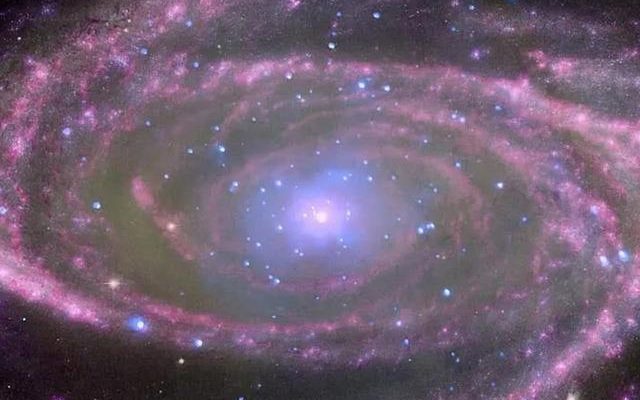Turkish doctoral student Fulya Kıroğlu, who studies astrophysics at Northwestern University in Illinois, USA, changed the perception about black holes with her work. In the study that the scientific world talked about, Kıroğlu concluded that medium-mass black holes do not directly swallow stars, but hurl their nuclei into the depths of the galaxy after tearing off a piece in each turn.
“EVERY TIME HE TAKES A MORE BIT FROM THE STAR”
Continuing his doctoral studies at Northwestern University Weinberg College of Arts and Sciences with a Fulbright scholarship, Kıroğlu used three-dimensional computer models to show that medium-sized black holes eject their cores and break off a piece of stars before leaving a cosmic trace, causing brightness.
The Turkish doctoral student’s discovery resonated in the scientific world and changed the perception of black holes.
Kıroğlu stated that the medium-mass black hole caught the star in its orbit during the simulations. said.
Noting that the study describing the modeling analysis was accepted for publication in “The Astrophysical Journal”, Kıroğlu said that the findings were shared at the April meeting of the “American Physical Society”.
“WE CAN’T OBSERVED DIRECTLY”
Explaining the details of her space exploration at Northwestern University, Fulya Kıroğlu said, “Black holes do not emit light, so we cannot observe them directly. However, it is possible to learn about them by examining their effects on the environment around them. There are several ways. We can look at their effects on stars and gases.” he said.
Saying that the stars around the black hole move very fast under the strong gravity effect, and this emits radiation that can be detected by telescopes, Kıroğlu also stated that gravitational waves can be observed in black holes that are in the process of collision and merger.
Kıroğlu stated that his work, unlike the others, is that black holes can be detected thanks to the brightness that occurs when swallowing stars approaching them.
The Turkish doctoral student stated that they sent sun-sized stars around black holes of different sizes with 3D simulations they prepared on advanced computers and examined the results.
“OUR RESULTS ARE EXCITING”
Kıroğlu shared the following information:
“We found that in some cases the star completely disintegrated, and in other cases only the dense core remained. We calculated that stars with a dense core can orbit black holes 5 times, losing a certain amount of mass per revolution, and therefore emitting X-rays of luminosity. Our results are exciting. In each round We found that the emitted light is bright enough to trace the existence of black holes. Basically we make stars out of a million tiny particles and we calculate these particles in the effect of a black hole. For this we use multiple graphics cards or parallelize our code so we can run this kind of simulation for two weeks or so. We can do it in a month.”
PRAISE MENTIONED IN USA AND UK
Stating that she believes her experiment on medium-sized black holes will guide the studies in the world of science, Fulya Kıroğlu said, “Such events usually occur from supermassive black holes at the centers of our galaxy, but these are very rare events. These simulations we have made can help astronomers find medium-mass black holes. ” said.
Kıroğlu pointed out that the findings may encourage the use of space telescopes that make X-ray observations for such rays for a longer period of time.
The Turkish doctoral student stated that he made a presentation on this subject at the “American Physical Society” meeting last month and that he was invited to several different meetings.
Kıroğlu’s work, which was advertised by the American Physical Society and Northwestern University, was praised on television channels in the USA and England.
WANTS TO CONTRIBUTE TO SPACE PROJECTS IN TURKEY
Fulya Kıroğlu stated that she wants to complete her post-doctoral work on similar subjects in the USA and then aims to stay in academia in Turkey or the USA. said.
“The establishment of the Turkish Space Agency is an important step. We have satellites built in the country.” Turkish doctoral student emphasized that sufficient resources should be allocated for their development and dissemination.
Kıroğlu said, “I think that increasing astronomical observations in Turkey, giving enough importance to astrophysics projects, encouraging students, and providing graduate or doctoral scholarships will have positive effects.” he said.
Expressing that he was excited for the Space Development Zone to be established at the Middle East Technical University (METU), which he graduated from, the young scientist said, “I could easily adapt to my education in America thanks to the knowledge I gained from my valuable professors at METU.” said.
Born and raised in Ankara and graduated from METU Physics Department in 2017, Fulya Kıroğlu completed her master’s degree in astrophysics at the same school and worked as a research assistant for two years.
Kıroğlu, who has been continuing his doctorate studies in the field of astronomy for 4 years as a Fulbright scholar in the USA, where he came in 2019, also continues his scientific studies as a member of the University’s Interdisciplinary Astrophysics Discovery and Research Center.
Source: AA
